Feature image via DapperQ
Everywhere — from Paris catwalks to grocery store checkouts– is filled with ideas about how to dress. They’ve got rules and handsome men clones galore, but what do you do when they’re not talking to you? Sure you can ignore them, but even dapper queers, fancy bois and dandy ladies need some help now and then. With that in mind, Anita Dolce Vita of dapperQ rounded up some experts and set out to create a style guide for us.
Chapter 1: The Suit
Part 1: An Introduction To Suits
Part 2: Classic Rules, Sizing and Fit
Part 3: The Fashion Council Answers Your Questions
Your Questions: Amswered! By Members of the Style Manual Fashion Council
The fashion council is comprised of fashion designers and bloggers and includes Sonia Oram, Editor in Chief of Qwear and advice columnist for Equally Wed; Auston George Bjorkman, Founder and Creative Director of the Sir New York menswear line; Ivette González-Alé (Tourisme Montréal 2012 “Queer of the Year”) and Crystal González-Alé, Founders and creative visionaries behind the Marimacho masculine clothing line for diverse bodies of all genders; and Anita Dolce Vita, Managing Editor at dapperQ.
In this chapter, Anita Dolce Vita, Sonia Oram, and Marimacho will be answering your burning suit questions.
Q: I dress on the masculine side. What am I supposed to wear to my own wedding?
A: from Anita Dolce Vita, Managing Editor, dapperQ
Emily Post and Martha Stewart may demand my head for saying this, but I believe that there is no right or wrong answer to this. As we redefine what constitutes a marriage, we are also redefining what constitutes appropriate marriage ceremony attire. The guidelines in this chapter are to assist in helping you find a better fit, not necessarily to dictate what your style should be.
Living in New York and having roots in New Mexico, I’ve seen all sorts of wedding attire, from cowboy hats to tuxes to swimwear. What you wear will depend on the formality of the event, if the event is indoor or outdoor, the location (e.g., a Cape Cod beach, a trendy SoHo loft, the lawn at the Palace of Fine Arts), the season, the time (daytime or evening) and the theme. Since this chapter is on suits, we’ll stick with that for now.
I once read that your outfit should be versatile enough that you can wear it again for another formal function without anyone thinking you’re wearing your wedding suit to a party. I agree with this approach because (1) a suit is a big investment and finding one that serves multiple purposes get you more bang for your buck and (2) breaking out of ridged “tux and tails” rules will allow for more creativity and style! The Autostraddle gallery of 50 Adorable Lesbian Couples Having Adorable Lesbian Weddings is a good place to start for inspiration. Another place I send readers to is the infamous The GQ Wedding Primer Starring Darren Criss of Glee; he rocks some seriously — no I mean SERIOUSLY — fierce wedding looks.
Here are some additional ideas:
Q: Yeah, but, where can I find suits that fit me?
A: From Sonia Oram, Editor in Chief of Qwear and advice columnist for Equally Wed
All DapperQs, no matter what their size, struggle finding menswear to fit their body shape. If you can afford a bespoke suit, the Butch Clothing Company would be ideal. (Anita Dolce Vita chimes in: ALSO, ALSO, ALSO, I just received word that Marimacho will soon be offering MADE-TO-MEASURE SUITS! Score!) Nothing else will fit quite as well, as they’ve done years of research and mastered the secret to hiding curves. We also have Ratio Clothing, an incredibly LGBTQ friendly online custom men’s shirt maker that will work with you individually over email to come up with the right measurements for a menswear shirt.
If you are going to buy a premade suit and get it tailored, look for jackets that fit in the shoulders so that you can get the sides, sleeves, and length adjusted. Then find pants that fit in the hips so that you can bring the length up. If you are of a smaller frame, I highly recommend Topman. Their clothes are tailored for skinny guys and fit smaller female-bodied people remarkably well. Men’s Wearhouse also has a fine array of options for a wide range of sizes.
I wrote Qwear features on all these companies, so if you’d like to hear more about my experience with them, check out these links:
“My Suit has Arrived!” (Modeling Topman Suit)
Interview with Shaz Riley of the Butch Clothing Company
“Ratio Clothing: Gay, or Just Awesome?”
Q: How do you find a blazer that doesn’t show off your waist and doesn’t bunch at the chest?
A: From Anita Dolce Vita, Managing Editor, dapperQ
Ah ha! Tailoring, tailoring, tailoring.
First I have to ask WHY it is that you don’t want to show off your waist? I wrote more extensively on jacket waists for dapperQ. In short, some dapperQs avoid anything deemed “fitted” when trying to achieve a more masculine look. However, this flies directly in the face of what menswear fashion experts are recommending when it comes to purchasing menswear jackets and blazers. The Handbook of Style: A Man’s Guide to Looking Good, by Esquire magazine, states that one of the key components to a perfect suit jacket is a fitted waist; “the jacket should have some fit to it in the waist area to give your body a more dynamic shape.” The experts at Mr. Porter recommend that your suit jacket and blazers have “enough shape to give you a waist, and it’ll be close – but not tight – around the stomach.” In the article “Suit Your Shape: How to Dress for Your Body,” GQ advises large men to avoid wearing a roomy suit, stating “it doesn’t make you look slimmer — it makes you look sloppy.”
If your fear of the fitted stems from the desire to conceal weight, consider the following recommendations in lieu of purchasing a boxy jacket with no shape:
+Lean towards solid, dark colors.
+If you want some pattern, try vertical lines. Vertical lines elongate. (Just be sure your pants have matching lines, or you run the risk of “splitting” your frame in two, which shortens you.)
+Avoid double breasted suits. Single breasted suits with one to two buttons and a deep-V lengthen the torso, whereas double breasted jackets add bulk.
+Stick with single vented jackets and avoid the double vent. Vents are the functional slits on the bottom back of a jacket that allow for movement. They tend to attract the eye. Thus, a single slit down the center draws less attention than two slits along your sides.
Q: Okay, Okay. So, tailoring is key. What exactly can a tailor fix? Is there anything a tailor can’t fix? And, is there anything I should bring with me to the tailor?
A: From Marimacho
Whether it’s a vintage gem from the Salvation Army, a hand-me-down from your dad, or a piece from H&M, chances are you’ve fallen in love with a blazer or suit that doesn’t fit quite right. Before you spend even $5 on that near-perfect addition on the pretext that you can “alter” it, you should consider what your local tailor can and cannot do, what it will cost and what you need to do to prepare. The right fit can make you look like a million bucks, so it’s always worth investing in tailoring a piece you will have for years!
The right person for the job
There are talented tailors out there, but the person you will probably be going to at your local dry-cleaner is most likely a seamstress/ seamster. What is the difference you ask? Tailors make, alter, and custom-fit garments, traditionally suits and “men’s” clothing. They specialize in formal wear, often apprenticing for years in their trade. A seamstress/ster is someone who sews seams, or, a machine operator in a factory who may not have the skills to make garments “from scratch” or to fit them onto a real body. Most altering jobs will not require a highly skilled tailor, but depending on your garment, you may want to spend a bit more time (and money) hunting down a reputable tailor. Don’t be afraid to inquire about the skill level of the person that may be altering your clothing. Yelp is great for that.
What to bring
When visiting a tailor, you should plan on bringing the following:
+Bra or binder that you would wear with that garment.
+A well-fitting button-down shirt that you plan on wearing with that garment (for both trousers and blazers/jackets).
+Shoes you would wear with that garment (for trousers).
+A blazer/ jacket or trousers that have your ideal fit. It is very helpful for tailors (especially less experienced folx) if you show them an example of what you would like.
+Optional: a piece of paper and a pen to jot down your measurements. This is useful information to have.
Tailoring Guidelines
Blazers, Suit Jackets and Sport Coats
Shoulders: If the garment does not fit your shoulders, DO NOT BUY IT! We cannot stress this enough — whether it’s a button-down shirt, blazer,or jacket, proper fit is all about the shoulders. A garment that does not properly fit the shoulders makes any look instantly sloppy. If the shoulders do not fit low enough, they cannot be extended or made larger. If the shoulder hits too low, they can technically be made smaller, but in the case of a blazer/suit jacket, this means reconstructing the entire garment and that can be very expensive (often more expensive than the garment itself). If you are hell-bent on altering this piece (maybe it’s a family heirloom or a kick-ass-one-of-a-kind designer blazer) then go to a highly skilled professional.
Cost: Expensive…very expensive!
Sleeves: One of the most common blazer alterations is sleeve length. Shortening the sleeves is a relatively simple alteration. In most cases, sleeves can be made longer, but only by the amount of fabric that is available on the underside of the sleeve, up to the lining. Button placement is important to consider whether you are shortening or elongating the sleeves. Are the buttons on your blazer or jacket functional? If the jacket has working or “surgeon’s” buttons, those holes cut in the fabric cannot be covered or moved. You will need a skilled tailor that can either add buttonholes to accommodate for a longer sleeve or make sure buttonholes are not too close to the edge for a shorter sleeve.
Cost: $15-30 per sleeve (plus additional cost of buttonholes)
Tip: Crystal often buys little boys blazers that fit great on the torso, but are too short on the sleeves to alter. Her solution is to roll up the sleeves; it is a casual look so you probably won’t be wearing this to the office, but it is perfectly acceptable for a night out.
Tip: When being fitted, be sure to wear a shirt that you plan on wearing with that jacket or blazer. Notice where the sleeves hit when your arms are at your side—the blazer sleeve should end about 1/2″ before your wrist bone, and about 1/4″-1/2″ of shirt cuff should show for added visual interest. We hear shirt cuff is the new pocket square.
Waist: Most “menswear” blazers and jackets you will come across will be boxy on the torso, and this is NOT a good look for anyone. Whether you are a size 6 or 26, a form fitting torso is always more flattering. Masculine folx tend to gravitate towards the boxy stuff and away from form-fitting jackets, fearing that they will look too feminine. Two things end up happening: you either look like you are swimming in your dad’s suit or you end up looking squat (short legs and no torso). Unfortunately, letting-out the sides is rarely possible because off-the-rack suits typically come with very little seam allowance on the sides. The most you can let it out is typically 1″.
Cost: $25-$60
Tip: A fitted blazer or jacket does not mean a garment you can’t move in! Once your tailor is done pinning and gathering the fabric to be taken in, test your range of movement. Pretend like you are giving someone a hug; if it feels like you are going to pop a pin, then the blazer is too tight.
Torso Length: A blazer or suit jacket cannot be made longer, but it can (in theory) be made shorter. However, making a jacket shorter is not recommended because it can throw off the positioning of the pockets as well as the proportion of the button stance. This is another costly job for a highly skilled tailor.
Cost: $80-100+
Tip: The general rule of thumb for traditional menswear is that the blazer/jacket should cover your butt; however, this may not always work for dapperQs whose proportions may be different from those of cis men. A blazer that covers your butt may, again, make you look squat. At Marimacho, we design blazers that hit half way down your butt, which we think is a more flattering silhouette on dapperQs. Of course, the ideal silhouette will vary by body shape and personal preference.
Back: Fabric should not “roll” at the back of the neck—a common fit issue with blazers. You can have the “roll” altered to lay smoothly, but only by an experienced tailor.
Cost: $50-75
Trousers
Waist: You can buy suit separates at places like H&M, Uniqlo, and Banana Republic, but most off-the-rack suits are sold in pairs. So, often times you will find that the jacket fits great, but the pants are too big or too small. If the circumference of the pant leg fits well but the waist isn’t quite right, we suggest taking it in for tailoring. The waist of a pair of trousers can be let in or taken out 2-3″. Look inside the seat for extra fabric at the waistband; this, minus 1/2″, is as far as you can take the pants out.
Cost: $15-25
Tip: We always suggest wearing a belt with your trousers, but you should be able to wear them without a belt. If they need a belt to stay up, you need to tailor them. When shopping for any item of clothing, particularly trousers, buy the garment that fits the widest part of your body (your waist, butt, etc.) and then tailor all the other parts in.
Length: Trousers are easily shortened, but lengthening them requires extra fabric at the hem. To determine if you can lengthen your pants, turn them inside and check how much allowance you have. Cuffs can also be removed for extra length, but be careful when lengthening used pants, as wearing along the edge could leave an unsightly line. When taking pants to be hemmed, it is important to understand where “the break” should be. The break is the horizontal crease in the fabric across the front of your pant leg whose size is determined by the length of your pants. A good break can “make or break” your trousers (no pun intended). If the break is not defined enough, your trousers will look too short. Some folx that are into the “mod” look like a straight crease line with no break. If you’ve got bigger upper legs, however, the fabric may pull up too high when you sit. Pants that are too long will create a lot of gathered fabric around your ankles and look sloppy.
Cost: $8-15
Tip: Uniqlo offers free or low cost hemming with any pair of trousers purchased. A “regular” stitch is free and an “invisible” stitch is $5. We recommend always opting for an “invisible” stitch when having your pants tailored.
Leg Width: Trouser legs can be taken in from the bottom of the pockets down. Letting the pants out is usually not possible due to limited seam allowance. We prefer pants on the slimmer side, but this is again a matter of personal preference.
Cost: $25-35
Tip: Your trouser should fit with no ripples radiating from the crotch, pulling across the hip area or puckering down the seam. If this is the case, go a size or two up and tailor the pant in where needed.
Keep your eyes open for the next chapter of The Style Manual
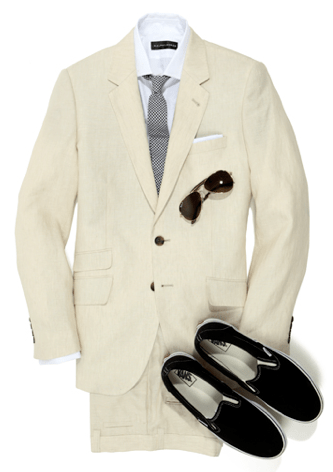
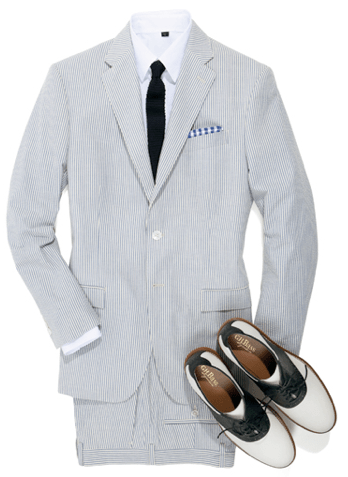
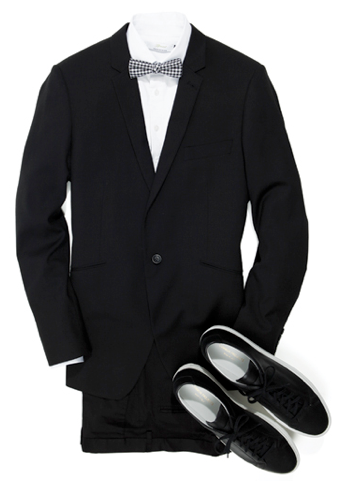
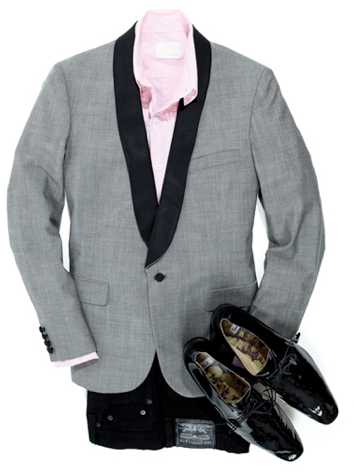
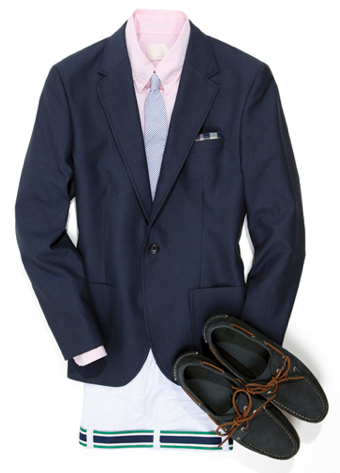
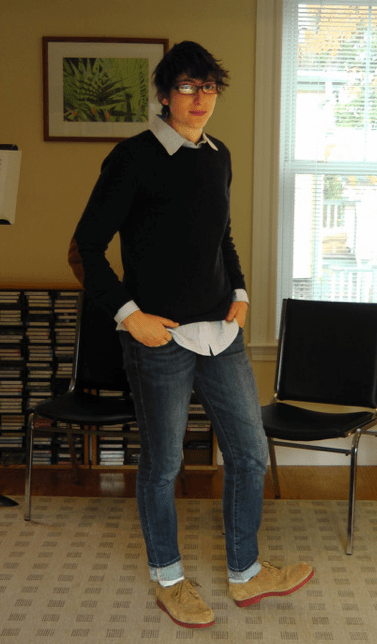
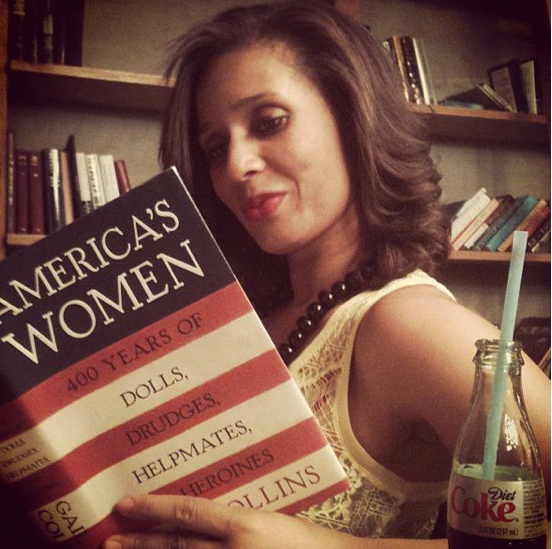
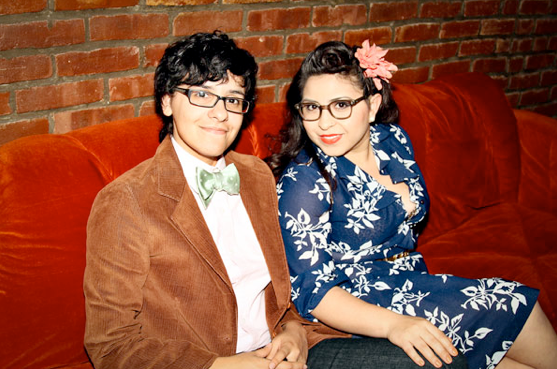

my heart is bounding out of my chest with my own name right now! This is THE breast I MEAN best thing I have read in a long time about the perfect fit! I am saving this whole page on my phone and referencing it next time I go shopping ANYwhere, and I showed my technologically-challenged girlfriend your last article and she is also very excited vicariously thru me :)
Thank You so much, you have no idea! Amazing :)
Keep these articles coming. They’re excellent and helpful. Even for those of us who are too short and small to ever dream of getting to wear a real suit. Sigh.
My girlfriend is 100lbs and 5’2″ and she got a crewcut suit from jcrew in the largest size. She looks foxy in that suit. So maybe there is hope for you?
Your girlfriend and I are the same size. This is relevant to my interests. My future dates thank you.
yesssssssss to all of this.
someone i know just spent a lot of money over at topman thanks to you
(that someone is me and i don’t regret a single waistcoat)
So for someone who buys most of her formal wear at thrift stores…
Good question, Chris!
If you are lucky enough to find great formal wear that fits your shape at thrift stores, go for it!
Those who have a greater challenge finding their desired “fit” can also benefit from thrifting. For example, if you know that your suit is going to need A LOT of alterations regardless of where you buy it, you can save some $$$ by purchasing a less expensive suit at a thrift store and spending the extra $$$ on great tailoring. But, again, as Marimacho said, the tailor does have some limitations re what can and cannot be changed.
The other recommendations can still apply – you’ll just be using the examples at a place like Housing Works rather than at a place like Macy’s.
I’m somewhere over the Bay of Bengal, but I just had to leave one more comment about regarding this brilliant manual.
Well, it may be too late for my current trip, but next time I’ll definitely try out some vertical lines because I need to elongate. And by the way, my waist is very dynamic and I love it!
Ok, landing in Thailand now, gots to go!
My tailor shop fixes the length of blazers for 35 dollars, but we are super nicely priced because we’re like a tailoring machine. (Lol it’s a small business owned by a family but there are 13 highly skilled seamstresses working in addition to 4 fitting assistants). But yeah, we totally don’t recommend adjusting the length either. Another rule is that the length should hit the knuckles of your hand, which helps for more petite people because it keeps the length proportionate to your arms.
The advice was all excellent, but the advice from Marimacho on tailoring was particularly amazing! I don’t see a lot of tailoring advice that is that concise and useful and it’s all information that is really important for people to know.
This article was so freaking THOROUGH. I don’t even wear suits, but I so appreciate the love, research, eye for design and good grammar that went into this piece!!!
this was amazing!
does anyone have experience with the ludlow suit (jcrew for men)? it looks so sharp!
the wool ones are pretty expensive though, but i’m allergic to wool anyway
I recommend the suit maker Indochino for a nicely made-to-measure suit within the $450 price range. Not only do the use worsted wool, but they give you $79 to spend on local adjustments and if the suit just plain can’t be adjusted locally, they will simply remake it for you.
I get lots of compliments every time I wear mine.
For nice made-to-measure shirts, I use the iTailor. While I wouldn’t get anything else from them, their shirts are top-notch! Everything about them can be customized to your liking at no extra charge. With shipping (from Thailand) they still cost less than an off-the-rack shirt at Express for Men.
I think the whole tailoring business is why I’ll never buy a real suit. For someone who likes to spend minimal time and money on shopping, the idea of going to a tailor and spending additional money on an already expensive item of clothing is a big turnoff.
It’s a shame though, because suits are so sexy.
This is pretty cool, I’m still coming to my usual conclusion of “I am stupid sized, and can’t justify the cost of a bespoke suit, so I’d have to make it myself, but I think sewing suits is boring, so I’ll never actually get around to it” but it’s nice to have all this info in one place.
Am I the only one that thought that GQ meant Gender Queer instead of Gentlemen’s Quarterly?
Holy crap that tailoring guide is perfect.
Just a note on jacket fit through the hip. Do you have a jacket you love to wear unbuttoned? I’ve noticed sometimes that the hem sweep of a jacket is not wide enough around the hip. When this is the case the jacket won’t lie flat below the button, it pulls open, creating stress on the button (even though the waist may be loose). Annoying gapping and bunching over the chest ensues, so check the hip fit if you can’t get a smooth look and the shoulder seems OK, cause sometimes it’s an easy fix.
Pingback: Fit (Unfortunately) Comes First - dapperQ
Pingback: Ask dapperQ: Curvy Androgyny? - My Hub List